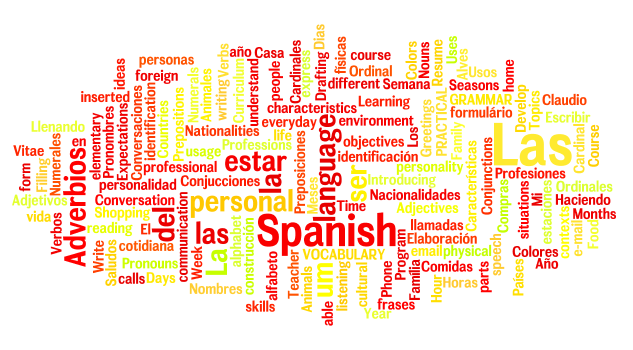Ser and estar can both be translated as "to be."
Notice that these two sentences can have different meanings in English.
The apple is green.
(Meaning the apple is not ripe.)
The apple is green.
(Meaning the color of the apple is green.)
The first case speaks of the condition of the apple. The apple is green because it has not yet ripened. When the condition of the apple changes, that is, when it has ripened, it will no longer be green, it will be ripe.
The second case speaks of the essential characteristics of the apple. The apple is green in color. This particular apple remains green even after it has ripened.
In English, the verb "to be" can be used to tell
how something is (the condition) and
what something is (the essence).
How is the apple?
It
is unripe.
What color is the apple?
It
is green.
In Spanish, a different verb is used to express "to be" depending on whether the speaker intends to address a condition or an essential quality.
La manzana está verde.
The apple is green. (condition)
La manzana es verde.
The apple is green. (essence)
To address
condition, use
estar. Estar is an irregular verb. It does not follow the standard rules of conjugation for regular -ar verbs.
| yo |
estoy |
| tu |
estás |
| él, ella, Ud |
está |
| nosotros[as] |
estamos |
| vosotros[as] |
estáis |
| ellos, ellas, Uds |
están |
To address an essential quality, use ser. Ser is also irregular.
| yo |
soy |
| tu |
eres |
| él, ella, Ud |
es |
| nosotros[as] |
somos |
| vosotros[as] |
sois |
| ellos, ellas, Uds |
son |
If you are talking about what something is, use ser; if you are talking about how something is, use estar.
What is she like?
She is quiet.
Use ser:
Ella es callada.
How is she acting?
She is being quiet.
Use estar:
Ella está callada
Uses of SER
- Used to express the hour, day, and date.
¿Qué hora es? (What time is it?)
Son las dos. (It's two o'clock.)
¿Qué día es hoy? (What day is today?)
Hoy es lunes. (Today's Monday.)
¿Qué fecha es hoy? (What's the date today?)
Es el cinco de mayo. (It's May fifth.)
- Used to express place of origin.
¿De dónde eres tú? (Where are you from?)
Soy de Colombia. (I'm from Colombia.)
- Used to express occupation.
¿Cuál es tu trabajo? (What do you do?)
Soy carpintero. (I'm a carpenter.)
- Used to express nationality.
¿Es ella puertorriqueña? (Is she Puerto Rican?)
No, es guatemalteca. (No, she's Guatemalan.)
- Used to express religious or political affiliation.
¿Son los García bautistas? (Are the Garcias Baptists?)
No, son católicos. (No, they're Catholics.)
¿Es el gobierno socialista? (Is the government socialist?)
No, es comunista. (No, it's communist.)
- Used to express the material something is made of.
¿De qué material es la mesa? (What's the table made of?)
Es de madera. (It's made of wood.)
- Used to express possession.
¿De quién es la pluma? (Whose pen is it?)
Es de Emilio. (It's Emilio's.)
- Used to tell where an event is taking place.
La película es en el cine. (The movie is at the theatre.)
La fiesta es en el club Fantástico. (The party is in the Fantastic Club.)
- Used with adjectives to express essential qualities.
Miguel es un hombre sincero. (Mike is a sincere man.)
También es guapo. (He's also handsome.)
Uses of ESTAR
- Used to express geographic or physical locations.
¿Dónde estás? (Where are you?)
Estoy en el laboratorio. (I'm in the laboratory.)
¿Dónde está Chile? (Where's Chile?)
Chile está en América del Sur. (Chile is in South America.)
- Used with adjectives to express a state or condition ("how" something is).
¿Cómo está la sopa? (How's the soup?)
La sopa está fría. (The soup is cold.)
¿Cómo estás tú? (How are you?)
Estoy muy bien, gracias. (I am very well, thanks.)
- Used with many idiomatic expressions. These are just a few.
estar de acuerdo. (to be in agreement)
estar de pie. (to be standing)
estar en camino. (to be on the way)
estar en las nubes. (to daydream)
















